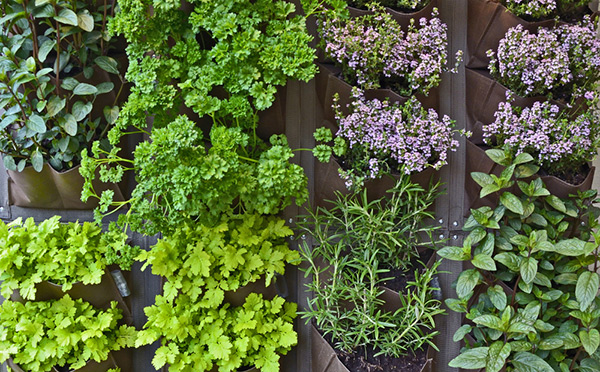
There are so many benefits that come from growing plants at your place, especially those you can eat. A home garden or plants grown indoors green up your space, and it means you don't have to buy plant-based food from the supermarket as much - a great way to save. A garden can also help support bees, butterflies, other insects and birds, and gardening is known to offer a wellness boost with time spent outdoors doing physical activity, especially if it's sunny. Herbs are an ideal choice if you're thinking of planting at home - they take up less space than many plants and it's great to have them close at hand if you're a keen cook. Because they can be grown in small pots, they don't require the same level of materials and inputs like soil, water or fertiliser. Also, some seeds are known to be hardy, so might be easier for beginner gardeners to grow. Because they're aromatic, they help improve indoor air, and can be dried to use in potpourri or stored for use in meals. As well as adding new flavours to meals, they can make food healthier because not as many other sauces and condiments are needed. Some people also use herbs as in tea, or as possible remedies for different ailments from cold symptoms to poor digestion or low energy.
Where to start
You might already have some flavourful herbs in mind, but something to weigh up first is the environment they'll grow in. Take the time to size up your place and work out whether you want to grow outdoors or indoors. This depends on many things like whether you have an existing garden you want to add to, how much space you'd have for new plantings outdoors, and if the climate will suit what you have in mind. Otherwise you might consider getting some pots and planting herbs on a balcony, or your kitchen windowsill. Conditions inside your home are just as important, as some herbs grow better in shade, while others prosper in the sun. Other things to decide on are whether you'll plant from seed or transplant seedlings. In either case, the herb plant will need enough space to grow, and adequately drained and fertilised soil. Experienced herb gardeners recommend regular trimming to reduce the chance they'll grow out of control, and cutting off flowers to encourage leaf growth.
What to grow
We all have different preferences and uses in mind. In general, woody herbs like rosemary and sage are quite resilient - they can grow well in warm conditions and also throughout winter. Herbs with soft leaves, like chives and basil, are often grown to be cut fresh and used as needed in cooking. Here are five that are commonly grown and a bit about each one:
Mint
Mint is versatile - it's often used with roast lamb and peas, in tea, as a cocktail ingredient, or a garnish. And it's known for its tendency to grow quickly. In damp soil it can grow throughout the year, and can be grown in shade or sun.

Parsley
This is another versatile option that's also often used as a garnish. It takes longer to germinate than many other herbs and responds best in areas of strong sunlight. This herb also needs regular watering, and the soil it's planted in needs to be well drained and fertilised.

Basil
Basil grows best in sunny places and when it's watered often. It adds fragrance to dishes and is often used in pasta-based dishes and pesto.
Sage
It pays to plant sage in a larger pot or outdoor area as it can grow to a larger size than other herbs. Different varieties are often added to gardens to add colour, and it can be dried and stored for use in cooking. Sage grows well in strong sunlight and in free-draining soil.
Thyme
Thyme can be grown more quickly from cuttings and only needs to be watered sparingly. It also needs free draining soil, but doesn't need to be grown in highly fertilised soil. The most flavourful thyme is grown in sunny conditions, and when harvested just before flowering.


